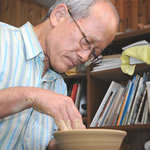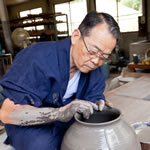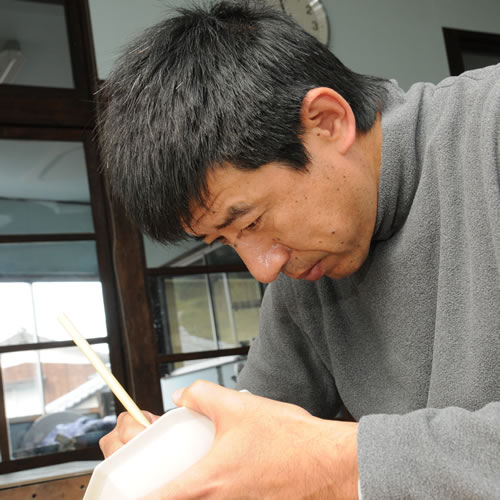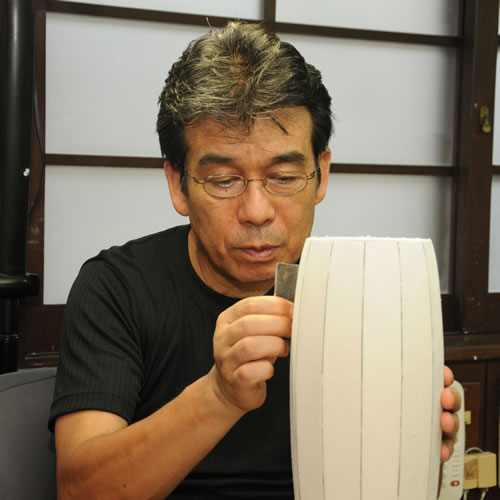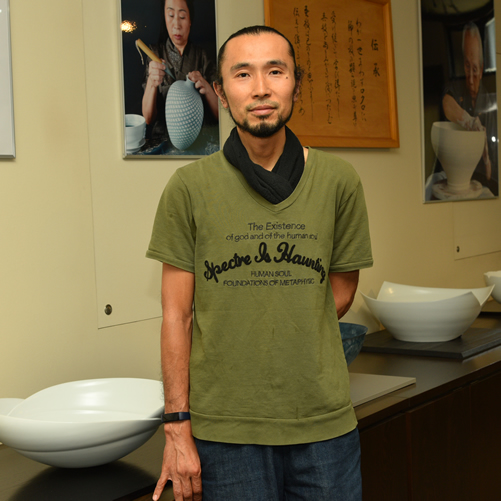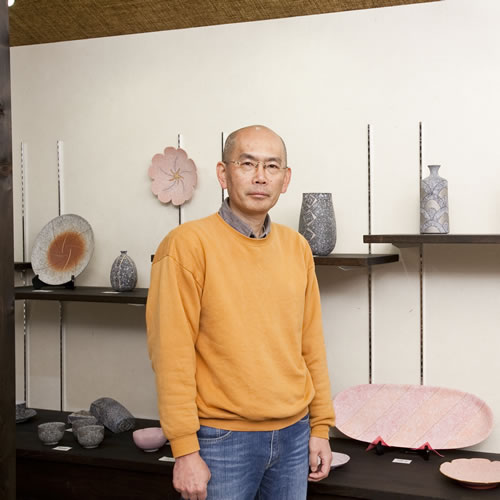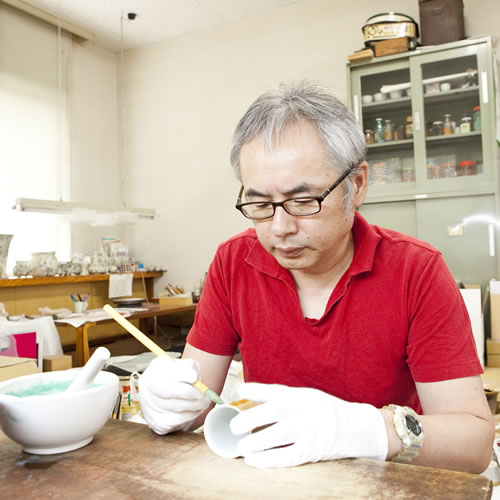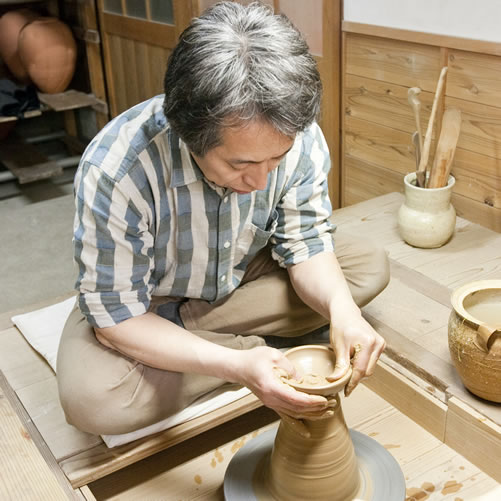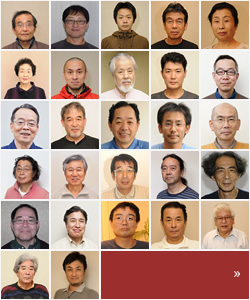Mino Ware
A ceramic ware representing 50% share in the Japanese market. Originated in the time of unglazed ceramic ware
MINO is the name which refers to the southern area of Gifu prefecture. It originally was a big "country", divided into the three regions, Seino, Chuno, and Tono. From the westen region of Tono to the easten end of Chuno such as Tajimi-shi, Toki-shi, Mizunami-shi, Kasahara-cho, Kani-shi. These are the regions when we refer to "Minoyaki (Mino Ware)".
Mino Ware's history starts in the earthen vessel period. These kilns were made limited to the small area, and items were only made for close regions. Then in the Heian period, it became the time of Kaiyutoki (pottery with ash glaze). Kaiyutoki was the first high-temperature glaze in Japan, and it was made in Sanageyo in Aichi prefecture. By rapid increase of the demand, Kaiyutoki was supplied throughout the country. Kilns with the genealogy of Sanageyo were established along with the kilns for the original Mino Ware. They made not only Kaiyutoki with high-quality, but also Ryokuyutoki (pottery with green glaze). From the end of 10th century to the 11th century, Mino Ware was top ranked ceramic in the whole country for the first time.
In Muromachi period, Seto's ceramic artists established the kilns in Mino, and "Koseto (old seto)" period was started. It was an important era at the point of laying the foundation of production of glazed pottery. Then, Ogama (large kiln) appeared and times moved to the "Seto Mino" period from Koseto period. By Ogama, it brought us big merits such as the expansion of kiln's surface area and volume, combustion efficiency, the establishment of stable production of the glazed pottery. Since whole glazed pottery was increased, their glaze tone became stable by comparing with Anagama period. Koseto vessels had been almost disappeared by leaving few small plates with green glaze, and they were allowed to advance the fields such as Tenmoku as tea room vessel and Haiyumaruzara (round plate with ash glaze) as Kyozen vessel.
In Momoyama period, Mino Ware became a big success with a focus on tea ceremony. While the mass production of "Seto Mino" were possible in the big kilns, on the other hand, the movement to make new pottery called Kaiseki had come out with a focus on vessels of the tea ceremony. Time had moved from "Seto Mino" to "Mino Seto". Among the long history of the Mino, it is the age that was the most brilliant. Here we present some of the wonderful Mino ceramic ware.
Kiseto (yellow seto)
Kiseto means yellow ceramics which came from Seto. Its quality is presented in its softness, calm yellow tone, and it is mostly designed by carving or the stamp on the surface. By Tanpan (paints with cupric sulphates) or Tessai (underglaze iron) as the decoration technique, the incidental details of brown or green color was added.
Setoguro (black seto)
Cylindrical tea bowl by Hikidashiguro technique fired in Mino's big kilns.
Feature : Spreads horizontally at the bottom and vertical rise at the hip.
It is also called "Hikidashiguro". With the iron glaze, it becomes black colored when taken out of the fired kiln.
Oribe (green and black)
Oribe has various designs.
Feature : Strain modeling like kutsugata chawan, bold design
Shino
Shino's glaze has lots of small halls called pin holes and the original soil is shown by the depth of the glaze.
Shino is different from Hakuji aiming for perfection. Shino is the charm itself in the imperfect world.
Shino has made it possible to draw freely by tetsue technique using iron oxide.
"Playing in the abstract world" This is the important theme for the tea bowls in the Momoyama period. It is said that the impression depends on the mind of the beholder. From wealthy merchant's chakaiki (documentary records of the tea ceremony) at that time, Big kilns pottery which was fired in Mino kiln was recorded as "Seto Ware". For this reason it is possible that at the time, Seto and Mino were considered as the same region.
In the Edo period, how one connects to the market becomes increasingly significant. The production at the original kiln "Momoyama" and the kilns for mass production to sell in "Edo" (now known as Tokyo) were divided. From the early to mid 17th century, many large jars were made. In Edo period, Mino was devided into many small kilns, and the number of kilns were limited by the share system. On the other hand, special products were made such as "Takada tokkuri (sake bottle)" or "Dachi dobbin (teapot)". Porcelain production also started.
In Meiji period, the feudal system of the shogunate collapsed. Mino Ware was distinguished from Seto Ware and its name was even more spread. Famous artists such as KATO, Gosuke who had famed in the master hands of sometsuke (underglaze blue) and NISHIURA, Enji who had special skill of Fukie or Yukasai (underglaze by thin engraving) appeared. In contemporary times, ARAKAWA, Toyozo, HAYASHI, Kagemasa, KATO, Kageaki (Both Important Intangible Cultural Asset holder) were active in as the representative Mino Ware potter. ARAKAWA, Toyozo overturned the stereotype with his masterpieces of the Momoyama period considered to be Seto Ware. This finding was also an important event in the history of Japanese ceramics. Reconstruction activities of the old pottery became active, and moved from copying of the old ceramics to the creation to eccentric pieces. Thanks to the technique and spirit which the pioneers had built, today Mino Ware is not only limited to mere reproduction of Mino Ware, but also produces new ceramics with personal aesthetics.

